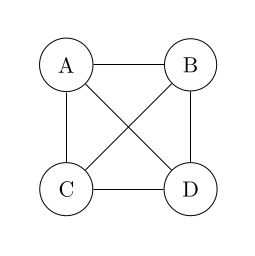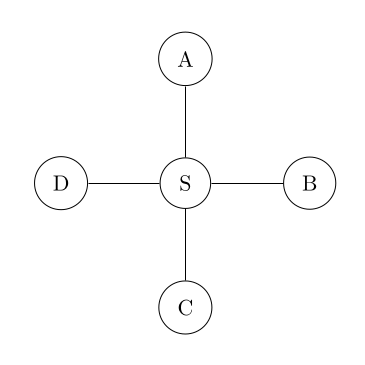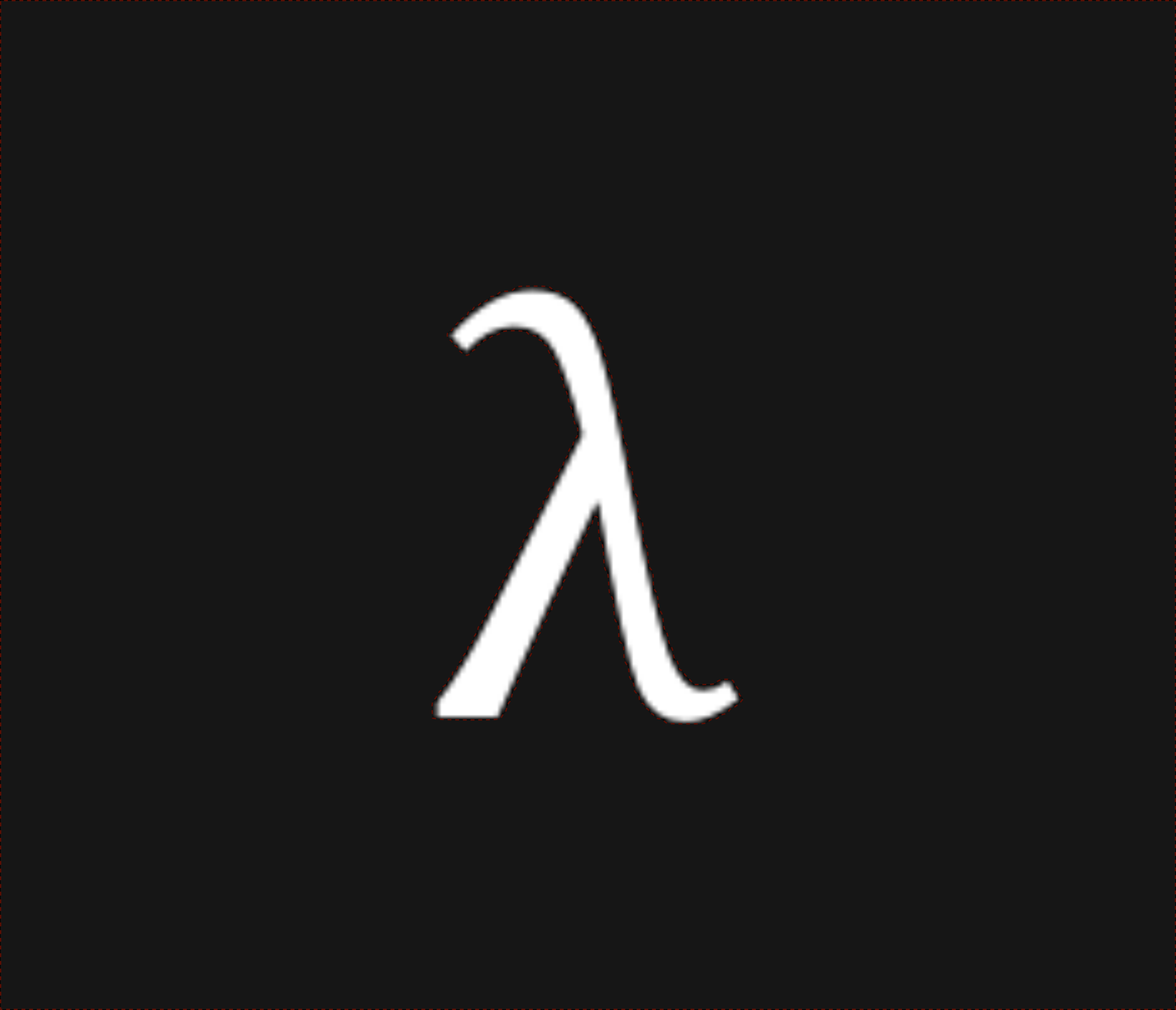Graph Notation 599 words published on August 15, 2025.
Expressing graphs is a useful thing to be able to do. Most libraries I’ve seen in the past give you a way to declare nodes and edges directly. In some applications this is the most natural way to express the graph, when edges are somewhat ad-hoc.
However, when working on a design for Secure Multiparty Computations we often needed a way to express graphs with more global notions of fully-connectedness. This got me thinking… could we use that as a primitive to build arbitrary graphs? The answer appears to be yes!
Fully Connected Graphs
Sets of fully connected nodes are denoted with {}, for example the
following shows a simple fully-connected graph of four nodes.
G = {A, B, C, D}

We can nest expressions within each other:
G = { {A, B}, {C, D} }
The two examples above are equivalent, however it may be useful to label specific groups of nodes anyway.
X = {A, B}
Y = {C, D}
G = {X, Y} = {A, B, C, D}
Fully Disconnected Graphs
We can also define fully disconnected graphs with [].
G = [A, B, C, D]
= [[A, B], [C, D]]

Star Graphs
While a disconnected graph may seem useless by itself, when nested within a larger connected graph they allow us to represent arbitrarily complex topologies of graphs (we should prove this true!). To accomplish this, we say that connectedness distributes:
{A, [B,C]} = [{A, B}, {A, C}]
For example a “star” graph with four edge nodes and a single center node can be represented like this:
G = { S, [A, B, C, D] }
= [{S, A}, {S, B}, {S, C}, {S, D}]

Example Reduction
Here we show that starting with a graph description G, we end up with an
equivalent graph description G' through a series of reductions.
We define G to be a graph of a disconnected [A,B], connected to C, all
disconnected from D, finally connected to E. We can interpret this more
naturally by thinking of the fully connected graph {A,B,C,D,E}, then removing
connections to maintain the property that [A,B] and [D, {A,B,C}] are
disconnected.
G = {[{[A,B],C},D],E}
-distributeC>
{[[{A,C},{B,C}],D],E}
-flatten>
{[{A,C},{B,C},D],E}
-distributeE>
G' = [{A,C,E},{B,C,E},{D,E}]
As you can see in the final, normal form, A and B are never connected, and
neither is D connected with any node other than E, which is precisely what
we asked for.
This was originally a thought experiment in Achilles’ Tent Note #12, but I think it’s a fun way to express arbitrary graphs. I’m not sure how novel (or complete) it is however, but I thought I’d unbury it a bit in case someone else finds it interesting. I’ve also trimmed the contents of the original post a bit to remove the stuff related to MPC, which is completely outside the scope of this post, and expanded on a few things.
Since I posted this I’ve implemented the basic idea in https://github.com/nixpulvis/grapl. Some people have also given me feedback about the difficulty describing ad-hoc edges and arbitrary cyclic structures. I’m considering some extensions to make this easier, but nothing final yet. I’ll try to update this post to point to the implementation if/when I finish it.

 nixpulvis
nixpulvis